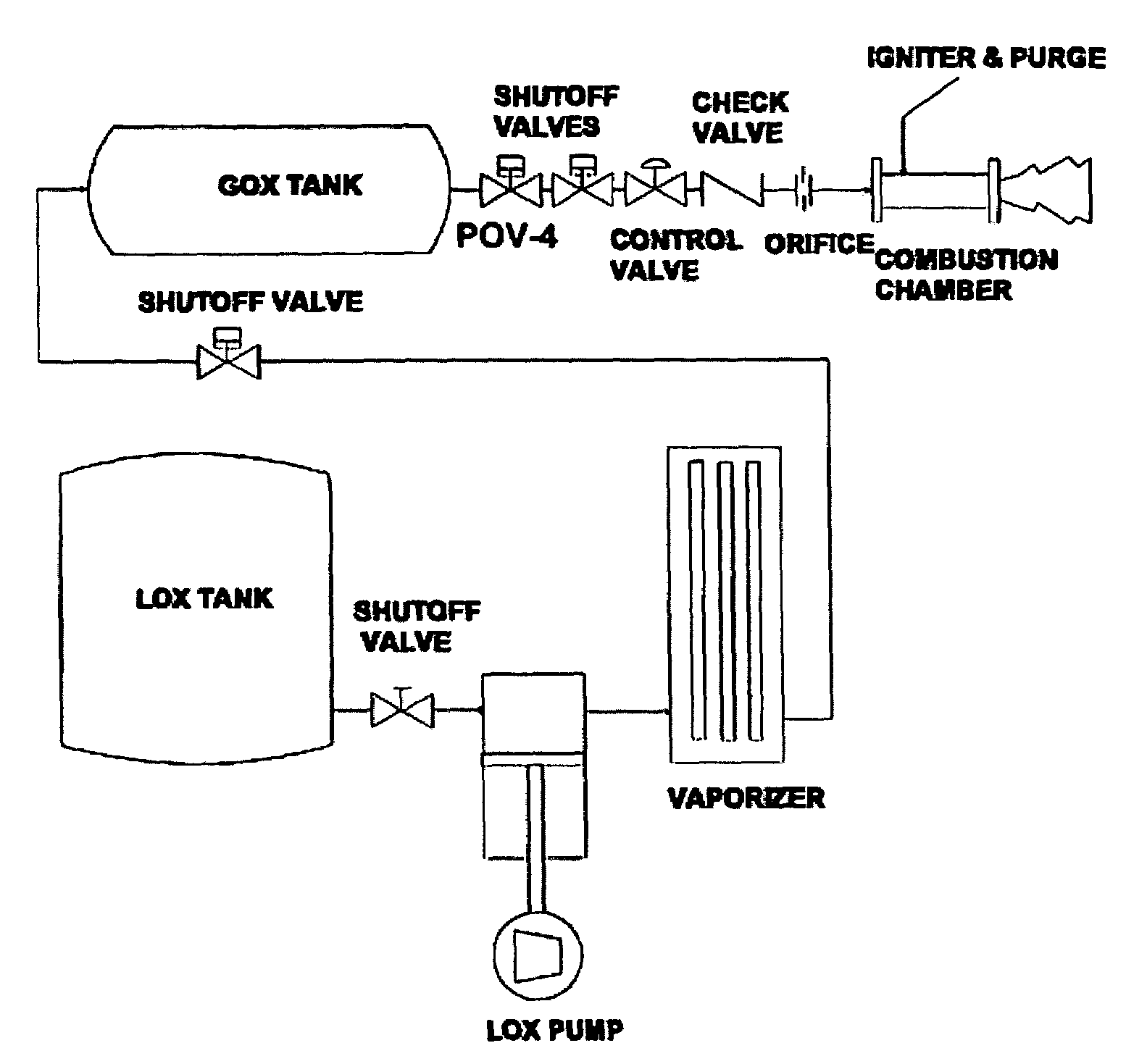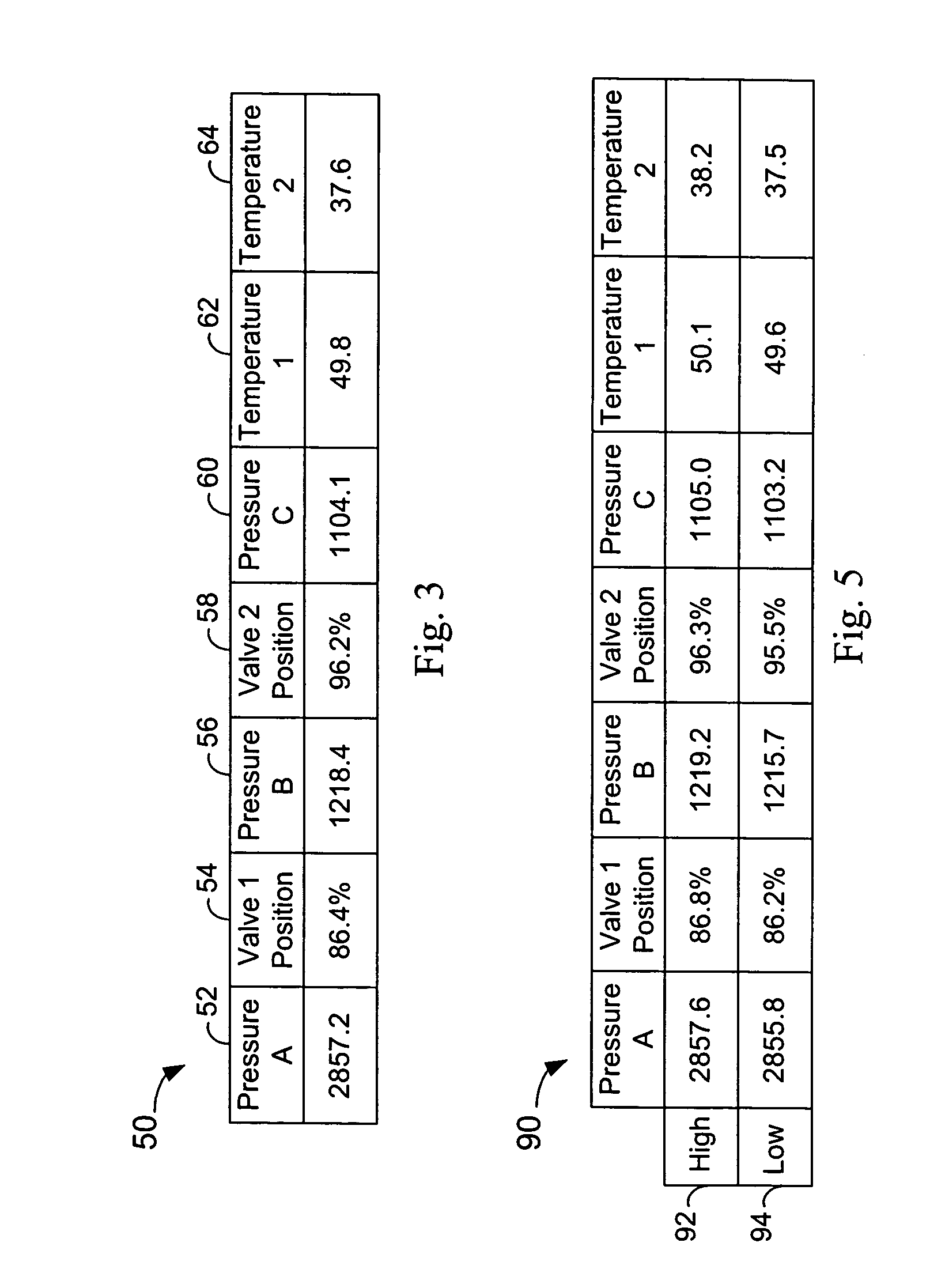Inductive monitoring system constructed from nominal system data and its use in real-time system monitoring
a technology of inductive monitoring and nominal system data, applied in the direction of instruments, computer control, biological models, etc., can solve the problems of insufficient diagnostic information, inability to detect anomalies, and deviations in data received from sensors even for identically-operating systems, so as to avoid complexity and expense
- Summary
- Abstract
- Description
- Claims
- Application Information
AI Technical Summary
Benefits of technology
Problems solved by technology
Method used
Image
Examples
example 1
[0118]The nine data sets collected with large orifice firings of the HCF (“nominal” data sets), were used to train the IMS. Vectors from three of the nine data sets were used as “basis classes” with each vector forming a nominal class containing one member. Three additional data sets from the nine were used to expand the initial basis class definitions through interpolation. For most vectors in these sets, the previously-defined class that was closest to a vector was expanded to include the vector as well as any data values lying between the vector and the class. If a training vector was too far away from any of the previously defined classes, a new nominal class was formed containing that vector as its initial member. The class closest to a vector is defined as that class that would require the least amount of expansion in order to incorporate that vector. Vector distance (or required expansion) is measured as the sum of percent changes in each vector parameter that is required to ...
example 2
[0121]In addition to actual sensor data collected from HCF firings, the IMS was tested on simulated data. Interval Constraint Simulator software (“ICS”) was developed at NASA Ames Research Center to provide a fast, flexible system modeling and simulation tool. Further description of ICS can be found in Attachment A, which is incorporated herein by reference. The ICS was used to simulate the HCF and to produce 1,200 simulated HCF runs. These simulated data sets were divided into three groups and used to train the IMS as in Example 1. However, these simulated data sets used to train the IMS and create the monitoring knowledge base did not reproduce the noise characteristics of actual HCF data collected by sensors. As a result the IMS trained on simulated data was not effective in monitoring actual (measured) data sets.
[0122]IMS monitoring improved on actual data when three actual data sets (including noise) were added to the training set. The incorporation of actual data sets allowed ...
example 3
[0125]IMS was trained with simulated data as in Example 2. All IMS training data that was used to construct the system monitoring knowledge base was derived from nominal simulations. Simulated test data was then generated including a system failure. In particular, a failure was injected near the end of the simulation that caused the shut-off valve POV-4 to stick open at 20 degrees instead of fully closing. When the data from the failure simulation was processed by IMS, the off-nominal system performance was detected within two data frames (0.2 simulated seconds) of the occurrence of the failure. Although IMS in the embodiment employed here did not identify the shut-off valve as the cause of the off-nominal behavior, rapid detection of an anomaly was achieved.
PUM
 Login to View More
Login to View More Abstract
Description
Claims
Application Information
 Login to View More
Login to View More - R&D
- Intellectual Property
- Life Sciences
- Materials
- Tech Scout
- Unparalleled Data Quality
- Higher Quality Content
- 60% Fewer Hallucinations
Browse by: Latest US Patents, China's latest patents, Technical Efficacy Thesaurus, Application Domain, Technology Topic, Popular Technical Reports.
© 2025 PatSnap. All rights reserved.Legal|Privacy policy|Modern Slavery Act Transparency Statement|Sitemap|About US| Contact US: help@patsnap.com



